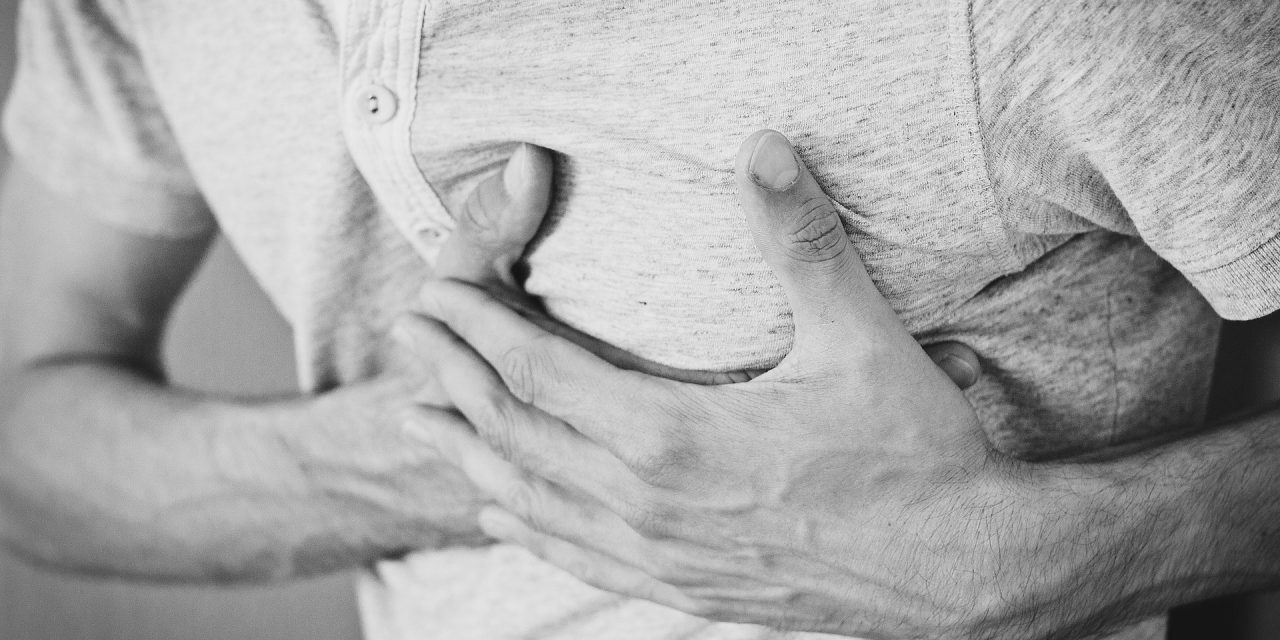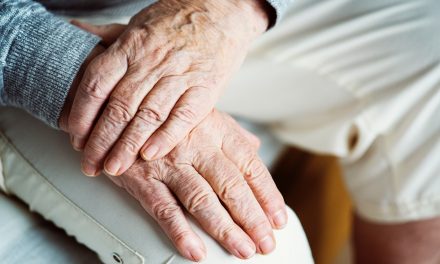Cardiovascular disease (CVD) is a general term for conditions affecting the heart or blood vessels. It’s usually associated with a build-up of fatty deposits inside the arteries – known as atherosclerosis – and an increased risk of blood clots. It can also be associated with damage to arteries in organs such as the brain, heart, kidneys and eyes. CVD is one of the main causes of death and disability in the UK, but can often largely be prevented with a healthy lifestyle.
Types of CVD
There are many different types of CVD. Four of the main types are:
Coronary heart disease- Coronary heart disease occurs when the flow of oxygen-rich blood to the heart muscle is blocked or reduced. This puts an increased strain on the heart, and can lead to:
- Angina – a type of chest pain caused by restricted blood flow to the heart muscle
- Heart attacks – where the blood flow to the heart muscle is suddenly blocked
- Heart failure – where the heart is unable to pump blood around the body properly
Strokes and TIA’s
A stroke is where the blood supply to part of the brain is cut off, which can cause brain damage and possibly death. A transient ischemic attack (also called a TIA or “mini-stroke”) is similar, but the blood flow to the brain is only temporarily disrupted.
The symptoms of a stroke or TIA can be remembered with the word FAST, which stands for:
- Face – the face may have drooped on one side, the person may be unable to smile, or their mouth or eye may have dropped.
- Arms – the person may not be able to lift both arms and keep them there because of arm weakness or numbness in one arm.
- Speech – their speech may be slurred or garbled, or they may not be able to talk at all.
- Time – it’s time to dial 999 immediately if you see any of these signs or symptoms.
Peripheral arterial disease
Peripheral arterial disease occurs when there’s a blockage in the arteries to the limbs – usually the legs. This can cause:
- dull or cramping leg pain, which is worse when walking and gets better with rest
- hair loss on the legs and feet
- numbness or weakness in the legs
- persistent ulcers (open sores) on the feet and legs
Aortic disease
Aortic diseases are a group of conditions affecting the aorta – the largest blood vessel in the body, which carries blood from the heart to the rest of the body. One of most common aortic diseases is an aortic aneurysm, where the aorta becomes weakened and bulges outwards. This doesn’t usually have any symptoms, but there’s a chance it could burst and cause life-threatening bleeding.
Causes of CVD
The exact cause isn’t clear, but there are lots of things that can increase the risk of getting it and the more risk factors there are, the greater the chances of developing it.
- High blood pressure. High blood pressure (hypertension) is one of the most important risk factors. If blood pressure is too high, it can damage the blood vessels.
- Smoking. Smoking and other tobacco use is also a significant risk factor. The harmful substances in tobacco can damage and narrow blood vessels.
- High cholesterol. Cholesterol is a fatty substance found in the blood which can cause blood vessels to narrow and increase the risk of developing a blood clot.
- Diabetes. Diabetes is a lifelong condition that causes blood sugar levels to become too high. This can damage the blood vessels, making them more likely to become narrowed. Many people with type 2 diabetes are also overweight or obese, which is another risk factor.
- Inactivity. Without regular exercise, it’s more likely to have high blood pressure, high cholesterol levels and be overweight. Exercising regularly will help keep the heart healthy and when combined with a healthy diet, can help to maintain a healthy weight.
- Being overweight or obese. Being overweight or obese increases risk. This is classed as having a BMI of over 25, or being a man with a waist measurement of 94cm (about 37 inches) or more, or a woman with a waist measurement of 80cm (about 31.5 inches) or more
- Family history of CVD. A family history of CVD is considered to exist if there is either:a father or brother diagnosed with CVD before they were 55, a mother or sister diagnosed with CVD before they were 65. If this is the case, getting blood pressure and cholesterol checked regularly is important.
- Ethnic background. In the UK, CVD is more common in people of South Asian and African or Caribbean background. This is because people from these backgrounds are more likely to have other risk factors such as high blood pressure or type 2 diabetes.
Other factors that affect the risk of developing CVD include:
- Age. Most common in people over 50 and the risk continues to rise with age.
- Gender. Men are more likely to develop CVD at an earlier age than women.
- Alcohol. Excessive alcohol consumption can also increase cholesterol and blood pressure levels, and contribute to weight gain.
Preventing CVD
A healthy lifestyle can lower the risk of CVD and staying as healthy as possible can reduce the chances of it getting worse. If there is a particularly high risk, medication can be prescribed to reduce the risk. This may include statins to lower blood cholesterol levels and/or low-dose aspirin to prevent blood clots and tablets to reduce blood pressure.
Coronary heart disease – Coronary heart disease (CHD or sometimes called Ischaemic Heart Disease) is a major cause of death both in the UK and worldwide. The main symptoms of CHD are: angina (chest pain), heart attacks and heart failure. Not everyone has the same symptoms and some people may not have any until they become unwell.
Causes of Coronary Heart Disease
Coronary heart disease is the term that describes what happens when the heart’s blood supply is blocked or interrupted by a build-up of fatty substances in the coronary arteries. Over time, the walls of arteries can become furred up with fatty deposits. This process is known as atherosclerosis and the fatty deposits are called atheroma. Atherosclerosis can be caused by lifestyle factors and other conditions, such as: smoking, high cholesterol, high blood pressure (hypertension) and diabetes
Treatment- Coronary heart disease can’t be cured but treatment can help manage the symptoms and reduce the chances of problems such as heart attacks.
Treatment can include:
- Lifestyle changes, such as regular exercise and stopping smoking
- Medication
- Angioplasty – using balloons and stents to treat narrow heart arteries, or
- Surgery
Recovering from the effects of CHD
After a heart attack, angioplasty or heart surgery, it’s possible to gently return to normal life over time. The Cardiac rehabilitation programme involves help and support in areas such as exercise, education, relaxation and emotional support and this will continue after discharge from hospital. It’s important to stick to the programme and continue to take regular exercise and lead a healthy lifestyle, as this will help to reduce the risk of further heart-related problems.
Cardiac arrest
A cardiac arrest is when the heart suddenly stops pumping blood round the body, commonly because of a problem with electrical signals. When the heart stops pumping blood, the brain is starved of oxygen which causes unconsciousness and breathing to stop.
What are the signs of a cardiac arrest?
There are usually no symptoms before a cardiac arrest and, without immediate treatment, it will be fatal. If someone is in cardiac arrest:
- They won’t be conscious
- They won’t be responsive
- They won’t be breathing, or breathing normally.
A cardiac arrest is a medical emergency. If you witness a cardiac arrest, you can increase the person’s chances of survival by phoning 999 immediately and giving CPR.
What causes a cardiac arrest?
The most common cause of a cardiac arrest is a life-threatening abnormal heart rhythm called ventricular fibrillation (VF). This is when the electrical activity of the heart becomes so chaotic that the heart stops pumping and quivers or ‘fibrillates’ instead.
Heart-related causes of cardiac arrest:
- Coronary Heart Disease
- Heart attack
- Cardiomyopathy and some inherited heart conditions
- Congenital Heart Disease
- Heart Valve Disease
- Acute Myocarditis (inflammation of the heart muscle)
- Heart conduction disorders that make you more likely to experience abnormal heart rhythms, such as Long QT syndrome.

Can you recover from a Cardiac Arrest?
VF can sometimes be corrected by giving an electric shock through the chest wall, by using a device called a defibrillator. This can be done by a member of the public (using a public access defibrillator), the emergency services or at hospital. Immediate CPR will keep oxygen circulating around the body until a defibrillator can be used and/or until the emergency services arrive.
What’s the difference between a Cardiac Arrest and a Heart Attack?
People often think that a cardiac arrest and a heart attack are the same thing, but this isn’t true.
A Heart Attack happens when blood supplying the heart muscle is cut off due to a clot in one of the coronary arteries. This can cause chest pain, although symptoms can be less severe, and can permanently damage the heart. The heart is still sending blood to the body and the person will be conscious and breathing. A person having a heart attack has a high risk of experiencing a cardiac arrest. Symptoms include chest pain – described as having a heavy weight on the chest, or being squeezed like a vice. There is also often pain in the neck, jaw or back. There may be feelings of heartburn or indigestion and light-headedness, shortness of breath and anxiety. Not all people have all symptoms, but particularly pay attention to chest pain which occurs on exertion but goes after some rest – as that could be a really early warning signal.
A Cardiac Arrest occurs when the heart suddenly stops pumping blood around the body, often because of a problem with the electrical signals to the heart muscle. Someone who is having a cardiac arrest will suddenly collapse and will stop breathing.
Both are life-threatening medical emergencies – call 999 immediately if you witness someone having a Cardiac Arrest or think you or someone you’re with is having a Heart Attack.
For more information visit: https://www.bhf.org.uk/
http://irishheart.ie/wp-content/uploads/2017/01/AMansGuideToHealth.pdf
Have you experienced any of the issues addressed in this article? How has this affected your life or your loved ones? Share your story or offer advice. Join or start the conversation below.





